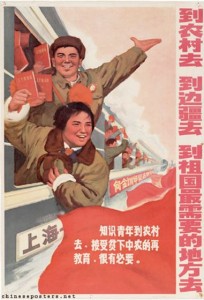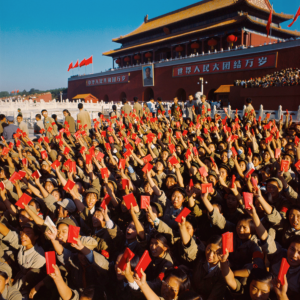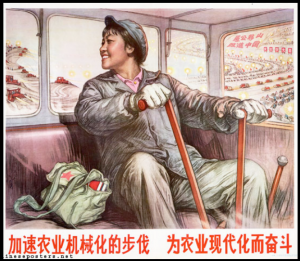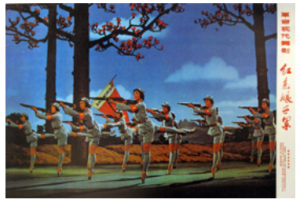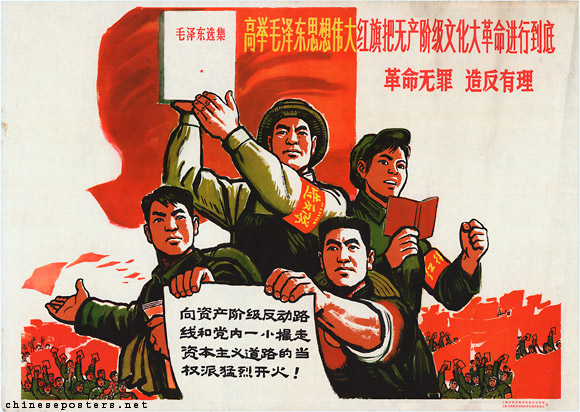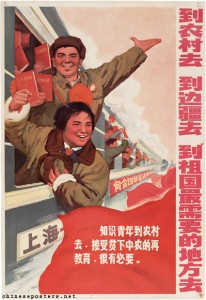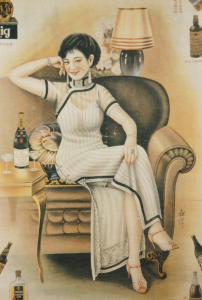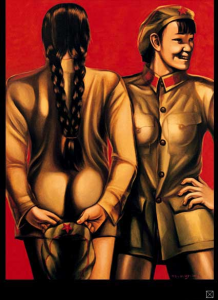
Summer Transparency
Hu Ming, Uniform Series
oil on canvas, 2001
The oil on canvas piece, Summer Transparency was created by artist Hu Ming in 2001 as part of her Uniform Series. The painting depicts a smiling women with bangs in a kaki green transparent romper-like version of the Cultural Revolution uniform. The uniform’s form fit and transparency reveals her breasts and buttocks. The women is in front of a red background and smiles as she proudly shows off her body. She stands firm and holds the proletarian hat adorned with a red star to cover the gap between her slightly spread legs. The side-by-side back and front views exhibit her entire body to the viewer and reveal two long braids. military uniform
During the Cultural Revolution led by Mao Zedong in the newly formed People’s Republic of China (dates) the Mao suit was designed and propagated by the government to promote proletarian values and gender equality. In Mao’s China, men and women were suppose to be equal. However, propaganda portraying the ideal women did not remove gender but masculinized the female figure. The image bellow depicts a female tractor operator in Mao’s China.
please introduce or make a thesis statement about these two contrasting artworks?

Liu Wenxi, 1970
Published by Renmin Meishu Chubanshe
In the poster the women has a broad smile and a wears clothe cap over a short haircut. Any trace of the female body is hidden by a shapeless proletarian uniform. Beside her is a green bag with the red star and a copy of Mao’s book. Instead of creating gender equality, this masculinization devalued the female body by making it less desirable than the male figure. Hu Ming’s Uniform Series takes revenge on PLO for the masculinization of the female figure and demoting femininity. Her transparent uniform which reveal her breasts and buttocks embraces the female body. In her painting, the women is just as muscular as the tractor driver but by revealing the attributes of the female body, she achieves a more realistic depiction. Her strong and confident stance shows that women do not have to be masculine to be strong. She shows the viewers that embracing sexuality doesn’t necessarily mean weakness. By providing both a front and back view, Ming shoes off the girls long hair and contrast with Mao’s depiction of women who has short hair like a man. The red background, collar, and hat connote nationalism and shows that femininity can still be patriotic. The short romper-like suit allows her legs to be on display. By depicting the Mao suit in a way that embraces female sexuality, Hu Ming has reclaims femininity and celebrates the women of the cultural revolution in a more dynamic way that allows them to be evocative, sexual, and strong.
In contrast to masculinized female body in Mao’s China, Hu Ming’s work reclaims femininity and sexuality through visual rhetoric of military uniform transparency. If this is the thesis statement and see what happens if you allow it to guide your analysis
Sources:
http://hu-ming.com/common/space_05e.html
http://hu-ming.com/all_list/01/index.html
https://blackboard.bowdoin.edu/bbcswebdav/pid-507901-dt-content-rid-1518724_1/courses/ASNS2076.GWS2076_2016S/mao%20suit%20slides%20.pdf (Black board in-class slides)

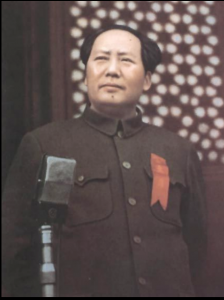
 Individual idem and inner meanings:
Individual idem and inner meanings: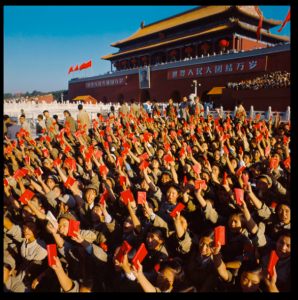 The Mao suit and Society:
The Mao suit and Society: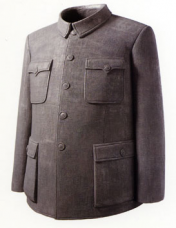 A Grey MaoSuit
A Grey MaoSuit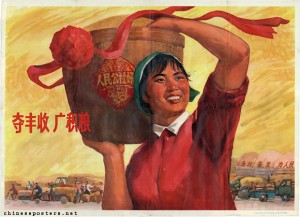 ‘Strive for an abundant harvest, amass grain 1973’
‘Strive for an abundant harvest, amass grain 1973’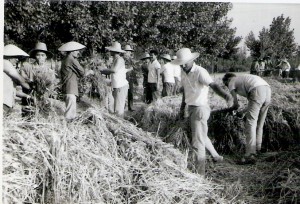 Farmers during the Cultural Revolution, 1970
Farmers during the Cultural Revolution, 1970